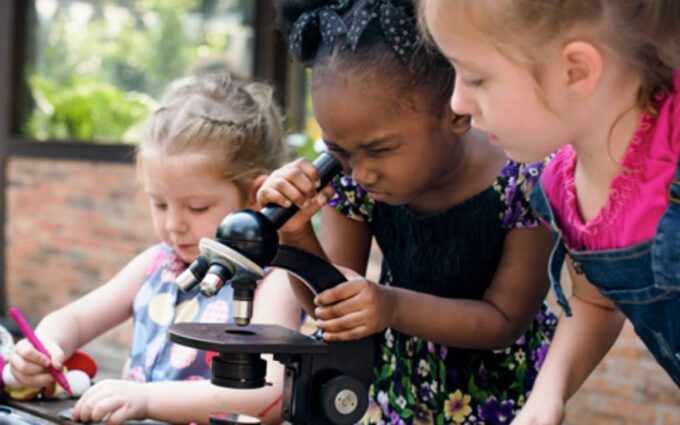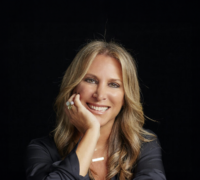
The value of LGBTQ+ inclusion in today’s uncertain DE&I landscape
Companies gain performance advantages through LGBTQ+ inclusion, yet nearly nine in 10 Swiss firms lag. Here’s how leaders can close the gap....

by Shelley Zalis Published July 12, 2024 in Diversity, Equity, and Inclusion • 5 min read
By diversifying the individuals and narratives featured in the media, we can dismantle deep-seated stereotypes. (Image created by Lexica)
“If you can see her, you can be her.” This philosophy underpins my dedication to reshaping the portrayal of women and girls in the media. The media acts as society’s mirror, influencing our perceptions of possible futures. Yet frequently, when we search for leaders or professionals, male figures predominate. This imbalance significantly affects how genders perceive available roles and ambitions.
In 2016, I co-founded the SeeHer movement, aiming to enhance the depiction of women and girls in the media by collaborating with the Association of National Advertisers (ANA) and leading Fortune 500 companies. Our Gender Equality Measure (GEM) has since been embraced by over 100 major advertisers, boosting the accuracy of female portrayals by 82%. SeeHer set a new benchmark, holding content creators and marketers accountable for the messages they send worldwide.
Geena Davis established the Geena Davis Institute on Gender in Media after noting the scarcity of female characters in children’s television. The institute has since achieved gender parity in leading roles in US films and television shows. The institute’s GD-IQ Spell Check for Bias, an AI tool designed to minimize script bias, promotes global diversity and showcases the impact of committed personal efforts on societal change. Films and TV shows with at least one female director or writer were found to be significantly more likely to achieve gender balance among the cast, emphasizing the importance of female perspectives in leadership roles within the industry.
Barbie has also played a pivotal role in shaping young minds through its line of inspiring role models. The Barbie Dream Gap Project challenges societal biases that limit young girls’ aspirations. Highlighting role models like Sally Ride, America’s first woman in space, and Jane Goodall, the renowned primatologist, encourages girls to explore careers in STEM and conservation, demonstrating that they can aspire to any career. These examples are not just toys; they are symbols of possibility.
In today’s digital age, the influence of the media is magnified by the pervasive reach of search engines. Searching for professions such as CEOs, scientists, or firefighters often yields results dominated by male images, reinforcing outdated stereotypes and subtly suggesting these roles are less accessible to women. This digital perpetuation of bias demands a proactive approach to ensure search results genuinely reflect our society’s diverse talents and ambitions.

The biases in search results and digital portrayals reflect not merely existing inequalities but are directly shaped by how algorithms and artificial intelligence are programmed. We must rethink and redesign these digital frameworks to foster equitable representation across all media.
The reality is that the media can be more than a cultural mirror; it has the potential to shape culture itself. By diversifying the individuals and narratives featured in the media and search results, we can dismantle deep-seated stereotypes. This change requires promoting women not just in front of the camera, but also behind it. Each step toward balanced representation can inspire a new generation to explore paths they might have never considered.
In the music industry, artists such as Beyoncé and Taylor Swift have significantly influenced visibility and perceptions of women. Beyoncé’s anthems like “Run the World (Girls)” celebrate female empowerment and cultural heritage, while Taylor Swift’s advocacy for artists’ rights highlights the importance of self-advocacy for women in music. Both artists inspire countless fans to recognize and challenge the societal norms surrounding female capabilities.
Under the visionary leadership of Victoria Alonso, Marvel Studios has set a precedent with more inclusive casting and storytelling in film. The success of Black Panther, celebrated for its predominantly Black cast and homage to African heritage, resonated globally and earned $1.3bn in revenue. So, diversity is not only ethically correct but also economically beneficial. Accurately reflecting society in the media not only enhances box office success but also affirms the value of inclusion.
The only thing that separates women of color from anyone else is opportunity. You cannot win an Emmy for roles that are simply not there.Viola Davis
In television, series such as The Handmaid’s Tale and Killing Eve have begun to reflect more inclusive narratives and complex female leads, respectively. These media products entertain while also provoking thought and dialogue about women’s roles, thereby enriching cultural understanding and acceptance.
As Viola Davis said: “The only thing that separates women of color from anyone else is opportunity. You cannot win an Emmy for roles that are simply not there.” Her words resonate deeply, emphasizing why it’s crucial to diversify media representation. Creating environments where diverse voices are heard and seen is imperative.
These examples demonstrate the transformative power of the media; when we diversify who we see on and off the screen, we challenge biases and create narratives that empower viewers, encouraging them to envision and pursue their fullest potential.
Achieving gender parity in the media isn’t just about fairness or changing what we see – it’s about forging a bold new future and transforming what we believe is possible. We are not merely dismantling age-old gender biases; we are building a world where everyone can pursue their dreams without constraints.

Founder and CEO of The Female Quotient
Shelley Zalis – CEO, Founder, and “Chief Troublemaker” of The Female Quotient – is an entrepreneur, three-time movement maker, and advocate for reshaping the workplace for the modern era. She is redefining leadership and challenging outdated systems.
At The FQ, Zalis built the largest global community of women in business across 30 industries in more than 100 countries. Previously, she transformed market research by founded OTX, later selling it to Ipsos. She co-created #SeeHer, championing accurate portrayals of women and girls in media.
A LinkedIn Top Voice and contributor to TIME and Forbes, Zalis’ accolades include the Global Leaders 50 List and Fast Company’s Brands That Matter.

October 24, 2025 • by Luca Condosta, Alexander Fleischmann in Diversity, Equity, and Inclusion
Companies gain performance advantages through LGBTQ+ inclusion, yet nearly nine in 10 Swiss firms lag. Here’s how leaders can close the gap....

October 21, 2025 • by Vanina Farber in Diversity, Equity, and Inclusion
When talk of diversity triggers backlash, leaders face a paradox: how to advance inclusion goals while choosing language that keeps dialogue alive in hostile environments....

August 20, 2025 • by Francesca Annalisa Petrella, Fernando Alonso Pérez-Chao, Luca Condosta in Diversity, Equity, and Inclusion
While support for workplace LGBTQ+ programs has dropped to just 38% globally, cities with strong inclusion policies demonstrate four times higher human capital performance and double the innovation scores than their less...

July 11, 2025 • by Silke Mischke in Diversity, Equity, and Inclusion
While some organizations retreat from inclusion commitments under political pressure, the path to lasting transformation lies in embedding diversity deeply within core values rather than treating it as a compliance issue. Leaders...
Explore first person business intelligence from top minds curated for a global executive audience